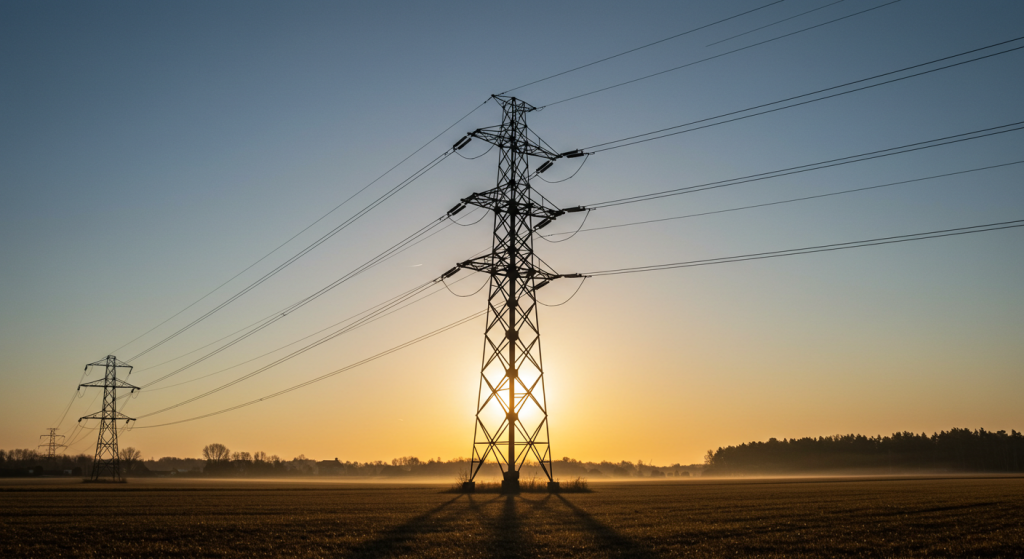Why Choose the Right Transmission Network Tower? A Guide
2025-04-30
We at XYTOWER, Transmission network tower, and designed to suit the different dielectric requirements of gas and liquid-filled substations, gas insulated grid substations, Custom Engineered Electric Substations Integrated With Generation Plants, Electric powered substational structures and buildings equipped with flight-approved remote switches.
Tower for Network Transmission
The transmission network tower, or power transmission tower as it is popularly known, serves as an overhead support for high-voltage power lines. These towers enable efficient power transmission from generation electricity plants to destination power stations marked on an electric grid, which are then supplied to consumers via differentials.
These structures act as the bedrock for efficient long-distance, low-voltage electric power factories powered through wind or solar substations anywhere across the globe.
Reliable and Robust Solutions for Transmission Network Towers
Towers that support both 10kV and 11kV systems serve as a backbone for overhead power transmission lines. These medium-voltage towers serve as the link between distribution substations to consumers in urban, rural, and industrial areas, making them integral to the medium-voltage distribution system. Supporting 10kV to 11kV lines, these towers provide a reliable electricity supply over short and medium-range distances.
Core Product Features
• Rugged and Reliable Steel Make: These electric towers are made of Q235 or Q345 galvanized steel, which makes them corrosion resistant while holding excellent mechanical strength.
• Customization: All towers are tailor-made per wind pressure, seismic force, electrical load requirements, and terrain. Covers the single-circuit and double-circuit tower designs to suit different grid requirements.
• Performance range: These rugged towers are designed to work in a wind-prone, seismic zones, and other challenging weather conditions, making them usable in diverse environments mountains, hill regions, and plains.
• Flexible Height from 10-50m: Adjustable to ensure adequate safety and ground clearance according to height, voltage level, and site conditions.
• Precise Design: The modular, bolt-connected parts can be easily disassembled and transported to the construction site, saving both effort and time.
• Safety Measures: Design features shield against lightning strikes as well as anti-corrosion treatment through hot-dip galvanizing. Additionally, powerful structural anchors provide long-lasting stability.

Particular Areas of Use
• Urban and Rural Distribution: These towers form the basis of the frameworks for overhead systems in both metropolitan and remote areas.
• Commercial Use: Commonly found within business parks and large-scale manufacturing facilities that require dependable power transmission.
• Difficult Environmental Conditions: Specially tailored mechanisms for very high altitudes and rough terrains, supporting continued function in extremely harsh environmental conditions.
Quality and Compliance of Network Towers
All national and international standards are upheld for each transmission line and tower, including testing for ISO 9001:2015 certification. The towers implemented into medium-voltage power networks possess an expected lifespan of over 30 years, making them a preferred choice among utility contractors. Ultra-reliable 10kV and 11kV transmission towers provide unfailing performance under variable workloads, extreme conditions, and rigorous standards while requiring minimal upkeep.
Core Parts: Building Transmission Network Tower
To comprehend how a tower operates, it's essential to grasp its structure. Each segment fulfills a unique requirement essential to the system's integrity.
Lattice Tower
The vertical framework.
Assembles lattice steel or tubular sections.
Cross Arms
Holds the conductor and insulator.
Changes in length according to the circuit type and spacing of the conductors.
Tower Base and Foundation
Provides Stability.
Remains constant regardless of the wind load, seismic load, and soil conditions.
Bracing System
Links structural components.
Ensures no buckling and vibration absorption.
Insulators
Restrict electrical leakage.
Constructed of porcelain, glass, or polymer.
Conductors
Transports the electric current.
Usually, an aluminum conductor steel reinforced (ACSR).
Ground Wire
Prevents lightning strikes.
Frequently fitted with optical fiber used for communication.
Design Considerations: Strength Meets Precision
- Tower Height and Ground Clearance
- Terrain, safety regulations, and voltage level dictate.
- Usually from 15m to 55m.
- Sag And Tension Analysis
- The conductor’s vertical decrease between two towers is a sag.
- Load Evaluation
- The structural reinforcement is checked using the following methods:
- Wind Forces
Raw Materials Developed for The Purpose of Use in Transmission Lines
Galvanized steel is used for the construction of most towers based on:
- Outstanding rigidity in comparison to its overall mass.
- Durability.
- Steel lattice towers have always had users due to reasons such as:
- The possibility of off-site assembly.
- Advanced modular configuration enables simple movement and building.
- Economical when made in large quantities.
The Installation Of Sensors In Power Towers to Form Smart Grid Systems
The incorporation of sensors into a system allows for immediate checks:
Towers can monitor the actual current and voltage flowing through them, as well as the condition of the materials used in construction.
Installation and Maintenance
The installation begins with surveying and laying the foundation.
Towers can be either prefabricated off-site or assembled on-site.
In remote areas, cranes and helicopters may be utilized.
Including inspections: ultrasonic drone checks, as well as visual checks, are all part of checkups.
Control of corrosion: bolt tightening and live line maintenance are key factors.
Explore our expert services in powerline maintenance that provide stability and strength.
Why Trust XYTOWER With Your Transmission Infrastructure?
New at XYTOWER? We have years of experience in:
- Building utility towers for different voltage levels.
- Supplying steel lattice and monopole towers.
- Providing comprehensive services covering design, supply, installation, and maintenance.
With XY TOWER, power utilities, EPC contractors, and government agencies across the world are served by our technological and engineering expertise.
From multi-circuit towers fitted for mountainous areas and tubular poles for towns, we provide, if not all, most infrastructure support.
Conclusion
A transmission network tower is not simply a tower made of steel; it is an integral part of modern life. The transmission towers are extremely important for infrastructure development as they help in supporting high-voltage conductors and maintaining the stability of the electrical grid.
Innovation in design, material science, and monitoring technology must advance in parallel with the increasing demand on power grids. Ironically, for those seeking transmission towers with advanced performance capabilities alongside innovative inspection solutions or corrosion protection consultancy, look no further than XY TOWER.

Hey, I’m Chunjian Shu
"X.Y. Tower: Reliable, innovative solutions for high-quality towers and electrical equipment with professional service.
